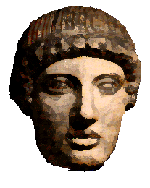Homer's Odyssey
The Cyclops
-
How many eyes? One, two or three?
-
The truth about Cyclops. Such a creature actually existed (really!)
The one thing most people know about the Cyclopes (plural of Cyclops) is that they had a single eye in the middle of their face. But artists could not, or did not always want to portray them thus: here is a selection:
Two-eyed?
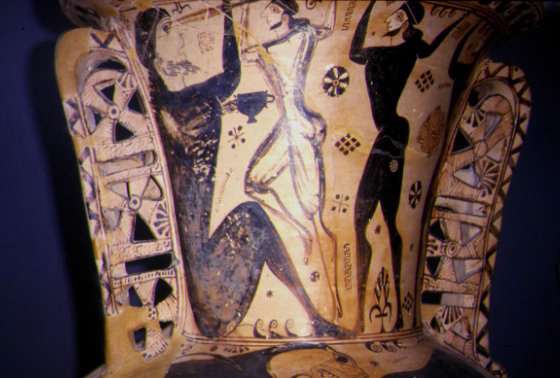
Three-eyed? 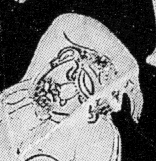

One-eyed?
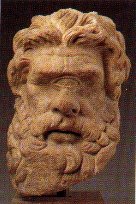

Meet the original Cyclops!
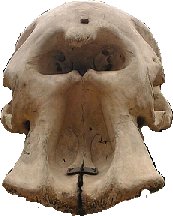 About 2,000,000 years ago elephants arrived on various Mediterranean
islands
About 2,000,000 years ago elephants arrived on various Mediterranean
islands  - including Sicily, and started to get smaller: some being eventually
less than one quarter of the size of their Mammoth relatives. The mini-elephants
became extinct only about 8,000 years ago - coincidentally at about the
time that our Neolithic ancestors were colonising the islands. The discovery
of a dwarf elephant skull would not have been an unusual event, even 5,000
years later, when the first Mycenaean Greeks were making contact with
the island.
- including Sicily, and started to get smaller: some being eventually
less than one quarter of the size of their Mammoth relatives. The mini-elephants
became extinct only about 8,000 years ago - coincidentally at about the
time that our Neolithic ancestors were colonising the islands. The discovery
of a dwarf elephant skull would not have been an unusual event, even 5,000
years later, when the first Mycenaean Greeks were making contact with
the island.
All elephants, of course, have a unique feature: their nose is elongated to form a trunk. But this proboscis has no bones in it - an elephant's skeleton would give little clue as to the physiognomy of its original owner- especially to a population unaware of a past elephant population, or who had never seen or even heard of an elephant. In fact the nasal cavity looks like nothing so much as a single enormous eye-socket. Hence the Cyclops legend? The dwarf elephant of Sicily would not have been a giant to compare with the modern African elephant - but his skull, with its single eye-hole would, in my opinion, certainly be enough to suggest that a race of one-eyed giants had once roamed on the island.
There's a book ( published Spring 2000) from Princeton University Press by Adrienne Mayor, which advances the theory that tales of Griffins, Giants and Centaurs as well as Cyclopes arose from interpretation of the fossil evidence by the ancients. It's called Palaeontology in Greek and Roman Times. The dwarf elephant theory to explain the Cyclops was first thought of in 1914 by Othenio Abel.

